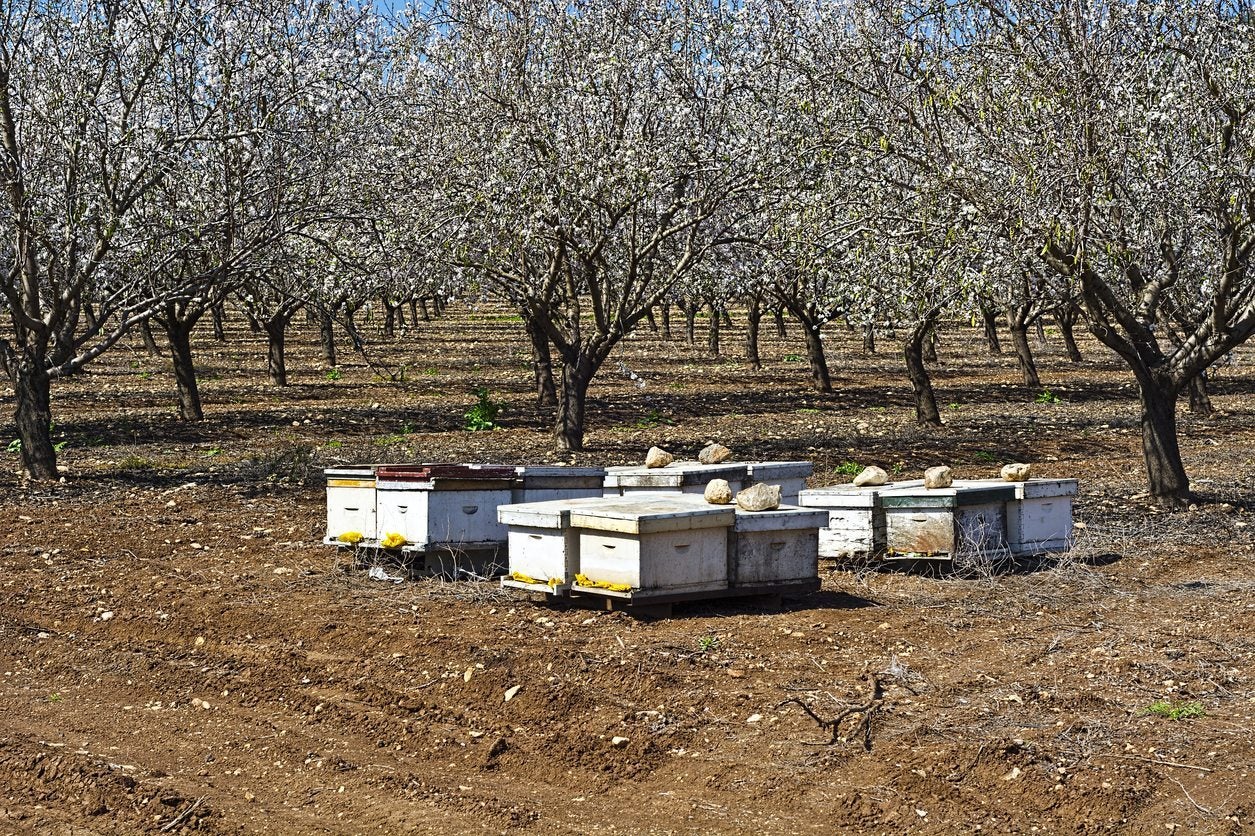Bees And Almonds: How Are Almond Trees Pollinated

Almonds are beautiful trees that bloom in very early spring, when most other plants are dormant. In California, the world’s largest almond producer, the bloom lasts for about two weeks in early February. If you plan to grow almond trees and you want them to produce nuts, you’ll need to think about how to pollinate almond trees before you even plant. You’ll need to choose the correct combination of varieties and consider your source of pollinators.
How are Almond Trees Pollinated?
Almonds are among the most economically valuable bee-pollinated crops. In fact, almonds are nearly 100% dependent on bees for pollination. If enough bees are present, 90 to 100% of almond flowers per tree can develop into nutlets (the first stage in nut development), but none will develop if no bees at all visit the tree. It’s not just honeybees that pollinate almonds. Almond pollinators also include bumblebees, blue orchard bees, and various other wild bees, and almonds serve as a valuable food source for these insects at a time when other flowers are scarce. Commercial growers in California pay to rent hives during the almond bloom. Attracting a mixture of bee species may increase nut production, especially in bad weather, according to experts at UC Berkeley. Growing several types of flowering plants and avoiding pesticides may help you attract wild bees to your almonds.
Does Almond Tree Pollination Require Two Trees?
Most almond varieties are self-incompatible, meaning they cannot pollinate themselves. You will need at least two trees, and they’ll need to be of two different varieties that are compatible and have overlapping bloom times. For example, “Price” is a good pollinator for the popular “Nonpareil” variety because the two bloom at approximately the same time. Plant the two trees about 15 to 25 feet (5-8 m.) apart so that bees will be likely to visit flowers on both trees. In commercial orchards, different varieties are planted in alternating rows. If you only have room for one tree, choose a self-fertile one like All-in-One, Tuono, or Independence®. Since the wind can help pollinate these trees, self-fertile varieties require fewer bees per acre to achieve good pollination rates. Successfully pollinating almonds is very important, but it’s not the only factor in good nut yield. Nutrient deficiencies and lack of adequate water can cause an excessive number of nutlets to fall off the tree before they develop. Making sure your trees are in good health will help them weather any environmental challenges they encounter.
Sign up for the Gardening Know How newsletter today and receive a free copy of our e-book "How to Grow Delicious Tomatoes".
Ilana Goldowitz Jimenez is a scientific and agricultural writer with a B.S. in Plant Sciences from Cornell University and a PhD in Chemical Biology and Infectious Disease from Harvard University.